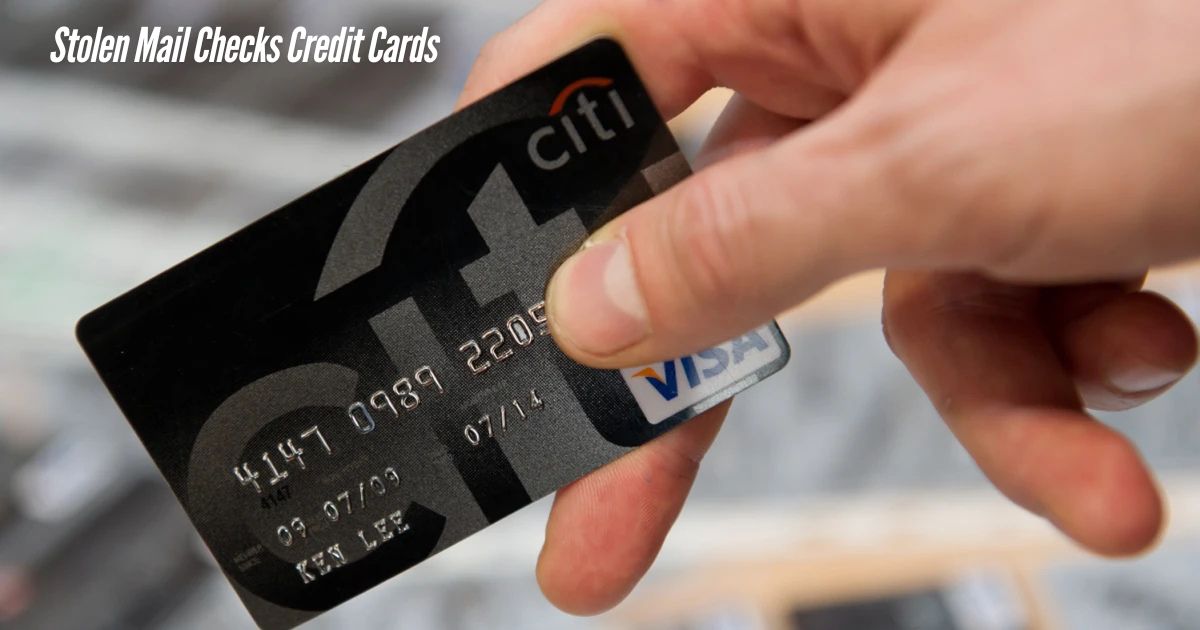Imagine starting your day with a routine trip to your mailbox, only to discover that your mail has been tampered with. It’s a situation no one wants to face, yet it’s becoming increasingly common. Stolen mail containing checks and credit card details can lead to financial losses and identity theft, causing immense stress and uncertainty.
If you’ve ever wondered how criminals exploit stolen mail or what you can do to protect yourself, this article has you covered. From understanding the tactics used by thieves to implementing effective safeguards, we’ll walk you through actionable steps to ensure your financial information stays safe. By the end, you’ll feel empowered to take control and protect yourself against mail theft and its consequences.
What Are Stolen Mail Checks and Credit Cards?
Stolen mail checks and credit cards refer to instances where thieves intercept your personal mail to steal sensitive financial documents. These items may include:
- Checks: Blank or completed checks that can be forged or fraudulently deposited.
- Credit Cards: Newly issued or replacement credit cards meant for your use.
- Bank Statements: containing account numbers and financial details.
- Pre-approved Credit Offers: Misused to open fraudulent accounts.
Thieves target these items to commit various forms of fraud, including forging checks, draining bank accounts, or running up credit card charges in your name.
Why Is Mail Theft on the Rise?
Mail theft has surged in recent years due to a combination of factors:
- Rise in Online Transactions: With more financial documents being mailed, opportunities for theft increase.
- Easy Resale of Information: Stolen data can be sold on the dark web.
- Lax Security Measures: Traditional mailboxes often lack sufficient protection against tampering.
- Targeting Vulnerable Areas: Apartment complexes and rural areas with centralized mailboxes are prime targets.
How Thieves Exploit Stolen Checks and Credit Cards
Understanding how criminals use stolen mail can help you stay one step ahead. Common tactics include:
1. Check Washing
Thieves chemically erase details from checks, allowing them to rewrite the payee’s name and amount.
2. Fraudulent Deposits
Checks can be deposited into unauthorized accounts or cashed illegally using fake IDs.
3. Unauthorized Purchases
Credit cards intercepted from the mail can be used for fraudulent online or in-store transactions.
4. Identity Theft
Bank statements and other personal documents are leveraged to commit identity theft, opening fraudulent accounts or loans in your name.
Key Takeaways
- Stolen mail checks and credit cards pose significant risks, including financial loss and identity theft.
- Mail theft is on the rise due to increased reliance on mailed financial documents and insufficient mailbox security.
- Criminals use stolen information for check washing, unauthorized purchases, and identity theft.
Actionable Tips to Prevent Mail Theft
Protecting yourself from mail theft requires proactive measures. Here are some proven strategies:
1. Secure Your Mailbox
- Install a lockable mailbox approved by the USPS.
- Consider a PO Box for sensitive mail.
2. Opt for Electronic Statements
- Switch to paperless billing and statements to reduce the risk of physical theft.
- Use secure, encrypted email services for financial communication.
3. Retrieve Mail Promptly
- Avoid leaving mail in your mailbox overnight.
- Schedule deliveries for times when you’re home.
4. Use Mail Hold Services
- If you’re away, request the USPS to hold your mail.
- Ask a trusted neighbor to collect your mail during vacations.
5. Shred Sensitive Documents
- Use a cross-cut shredder for old statements, checks, and credit card offers.
Case Study: How Jane Secured Her Mail
Jane, a homeowner in a suburban neighborhood, faced repeated mail thefts. Her mailbox was frequently left open, and she noticed missing credit card statements. After installing a lockable mailbox and switching to electronic billing, she no longer experienced theft and regained peace of mind.
Comparison Table: Traditional vs. Lockable Mailboxes
| Feature | Traditional Mailbox | Lockable Mailbox |
|---|---|---|
| Security Level | Low | High |
| Risk of Tampering | High | Low |
| Cost | Low | Moderate |
| Convenience | Moderate | High |
Advantages of Proactive Protection
- Peace of Mind: Knowing your financial information is safe.
- Reduced fraud risk: prevent unauthorized transactions and identity theft.
- Financial Security: Avoid monetary losses associated with check fraud.
What to Do If Your Mail Is Stolen
If you suspect your mail has been stolen, act quickly.
- Notify Your Bank and Credit Card Companies: Cancel compromised cards and issue stop payments on stolen checks.
- File a Report with USPS: Submit a mail theft report online or at your local post office.
- Report to Local Authorities: Notify law enforcement for official documentation.
- Place Fraud Alerts: Contact credit bureaus (Equifax, Experian, TransUnion) to add fraud alerts to your accounts.
- Monitor Your Accounts: Regularly check for unauthorized transactions.
FAQs
Q1: How do I know if my mail has been stolen?
Signs include open or missing mail, unauthorized transactions, or receiving notification of new accounts you didn’t open.
Q2: Can I replace stolen checks?
A: Yes, contact your bank immediately to issue stop payments and request new checks.
Q3: What should I do if my credit card is stolen from the mail?
A: Notify your credit card company to cancel the card and dispute any unauthorized charges.
Final Thoughts
Mail theft can feel like an invasion of your privacy and security, but you don’t have to face it alone. By taking proactive steps and staying vigilant, you can safeguard your financial information and regain control of stolen mail, checks, and credit cards. Share this article with friends and family to spread awareness and help others protect themselves against stolen mail, checks, and credit cards. Together, we can outsmart thieves and keep our personal information safe.
What steps will you take today to secure your mail? Let us know in the comments below!
